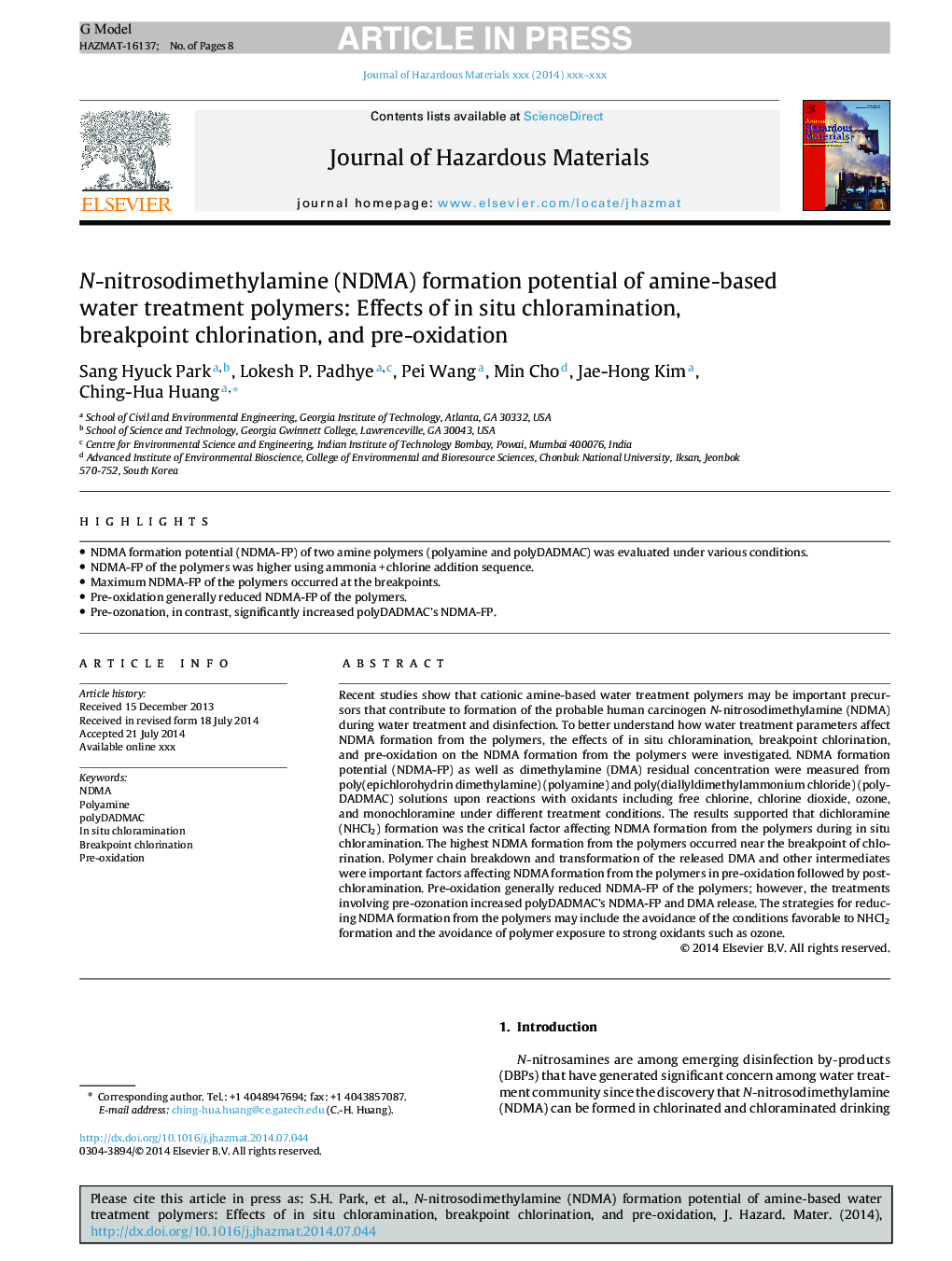| کد مقاله | کد نشریه | سال انتشار | مقاله انگلیسی | نسخه تمام متن |
|---|---|---|---|---|
| 576488 | 1453078 | 2015 | 8 صفحه PDF | دانلود رایگان |
عنوان انگلیسی مقاله ISI
N-nitrosodimethylamine (NDMA) formation potential of amine-based water treatment polymers: Effects of in situ chloramination, breakpoint chlorination, and pre-oxidation
دانلود مقاله + سفارش ترجمه
دانلود مقاله ISI انگلیسی
رایگان برای ایرانیان
کلمات کلیدی
موضوعات مرتبط
مهندسی و علوم پایه
مهندسی شیمی
بهداشت و امنیت شیمی
پیش نمایش صفحه اول مقاله

چکیده انگلیسی
Recent studies show that cationic amine-based water treatment polymers may be important precursors that contribute to formation of the probable human carcinogen N-nitrosodimethylamine (NDMA) during water treatment and disinfection. To better understand how water treatment parameters affect NDMA formation from the polymers, the effects of in situ chloramination, breakpoint chlorination, and pre-oxidation on the NDMA formation from the polymers were investigated. NDMA formation potential (NDMA-FP) as well as dimethylamine (DMA) residual concentration were measured from poly(epichlorohydrin dimethylamine) (polyamine) and poly(diallyldimethylammonium chloride) (polyDADMAC) solutions upon reactions with oxidants including free chlorine, chlorine dioxide, ozone, and monochloramine under different treatment conditions. The results supported that dichloramine (NHCl2) formation was the critical factor affecting NDMA formation from the polymers during in situ chloramination. The highest NDMA formation from the polymers occurred near the breakpoint of chlorination. Polymer chain breakdown and transformation of the released DMA and other intermediates were important factors affecting NDMA formation from the polymers in pre-oxidation followed by post-chloramination. Pre-oxidation generally reduced NDMA-FP of the polymers; however, the treatments involving pre-ozonation increased polyDADMAC's NDMA-FP and DMA release. The strategies for reducing NDMA formation from the polymers may include the avoidance of the conditions favorable to NHCl2 formation and the avoidance of polymer exposure to strong oxidants such as ozone.
ناشر
Database: Elsevier - ScienceDirect (ساینس دایرکت)
Journal: Journal of Hazardous Materials - Volume 282, 23 January 2015, Pages 133-140
Journal: Journal of Hazardous Materials - Volume 282, 23 January 2015, Pages 133-140
نویسندگان
Sang Hyuck Park, Lokesh P. Padhye, Pei Wang, Min Cho, Jae-Hong Kim, Ching-Hua Huang,